Trains on boats and planes
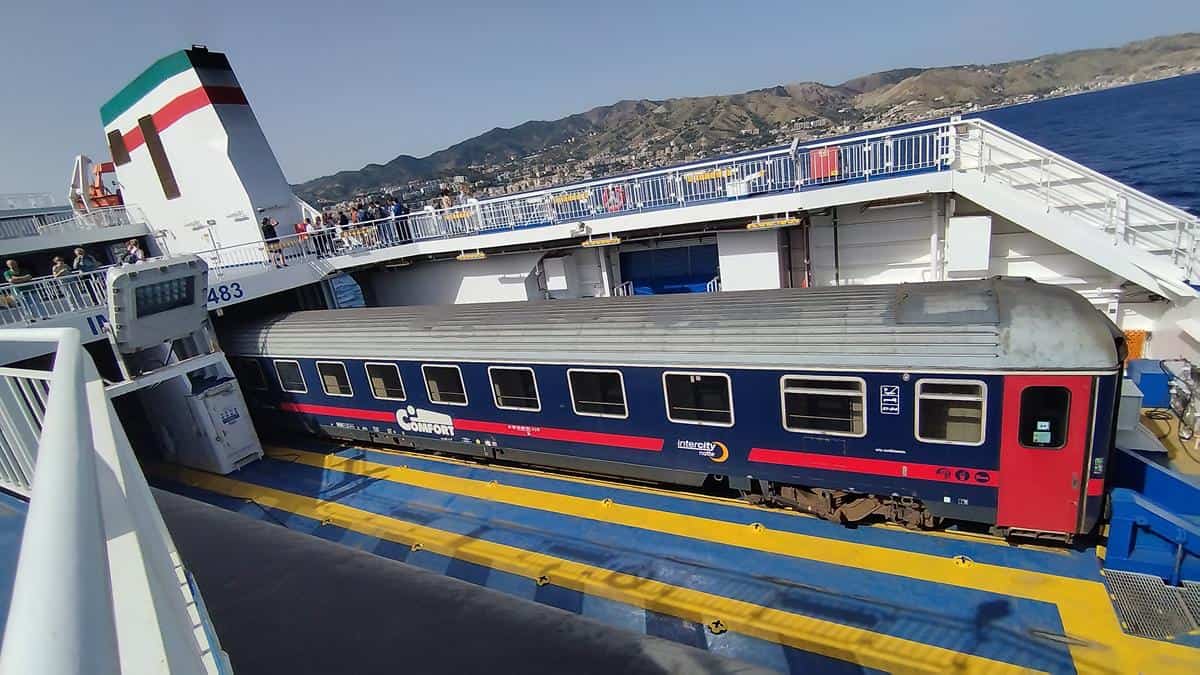
Trains on boats
Since trains were invented it makes sense that there have been train-ferries to transport them across open water. Does it? -Ed
The first one was in 1833 in Scotland, used to carry minerals across the Forth and Clyde Canal. As trains became mainstream there were soon to be hundreds of train-ferries across the world. Nowadays there are only a handful (maybe they realised they could just get off and get a train at the other end?) In Europe there is only one passenger train-ferry left, in Sicily. There used to be a passenger train-ferry from Hamburg to Copenhagen but now it takes the Great Belt Bridge.
Europe’s last passenger train-ferry runs between Italy and Sicily. It launched in 1899 and only sank once, when it hit a mine in the First World War (it was dredged up, repaired and put back to work.) The Messina Straits can be dangerous though, with currents that go in both directions and two notorious whirlpools named after Greek goddesses.
Most train-ferry sinkings occurred from the train-ferry not having rear sea gates. After a typhoon in Japan in 1954 sank five train-ferrries, and several train-ferries were lost in storms in the Great Lakes in the US, they were all retro-fitted with rear gates. The builders had mistakenly thought that the waves would wash on and wash off, but in practice they couldn’t wash off before the next wave came, leading to rapid sinkage.
Not only is it the only passenger train-ferry in Europe, but the Iginia is a revolutionary eco battery-powered train-ferry with solar panels. It also has a larger capacity than its predecessor, with four tracks and can take 27 carriages (and 700 people). The train that boards it is a sleeper train that starts in Milan and runs the length of Italy before stopping at Villa San Giovanni where the engine is disconnected. After the lines on the boat are carefully aligned with those on the slip, the train is shunted on and split up onto the different tracks. This can be the dangerous part as it’s important not to overload one side. (In 1909, when loading the SS Ann Arbor No. 4 in Michigan, a switching crew put eight cars of iron ore on its portside tracks, it capsized and quickly sank, fortunately the crew survived.) Once the train is loaded onto the boat, the passengers can choose whether to stay on the train or explore the boat, but are not allowed to walk around the train deck.
27 train carriages may seem like a lot, but the Sicilian train-ferry is small in comparison to the Skåne. Until 2021 the Skåne ran from Hamburg to Copenhagen. It was the largest multipurpose ro-ro(roll-on, roll-off)/train ferry in the world. The Skåne has 6 railway tracks split over two decks with over a kilometre of track in total. In order to lift the train carriages to the upper deck, the boat is equipped with a two-track lifter capable of lifting 816 tonnes.

There are also two decks for road vehicles. It has a gross tonnage of 42,800t (big, but only a tenth of the world-record largest 403,342-gross-tonnage construction ship Pioneering Spirit).
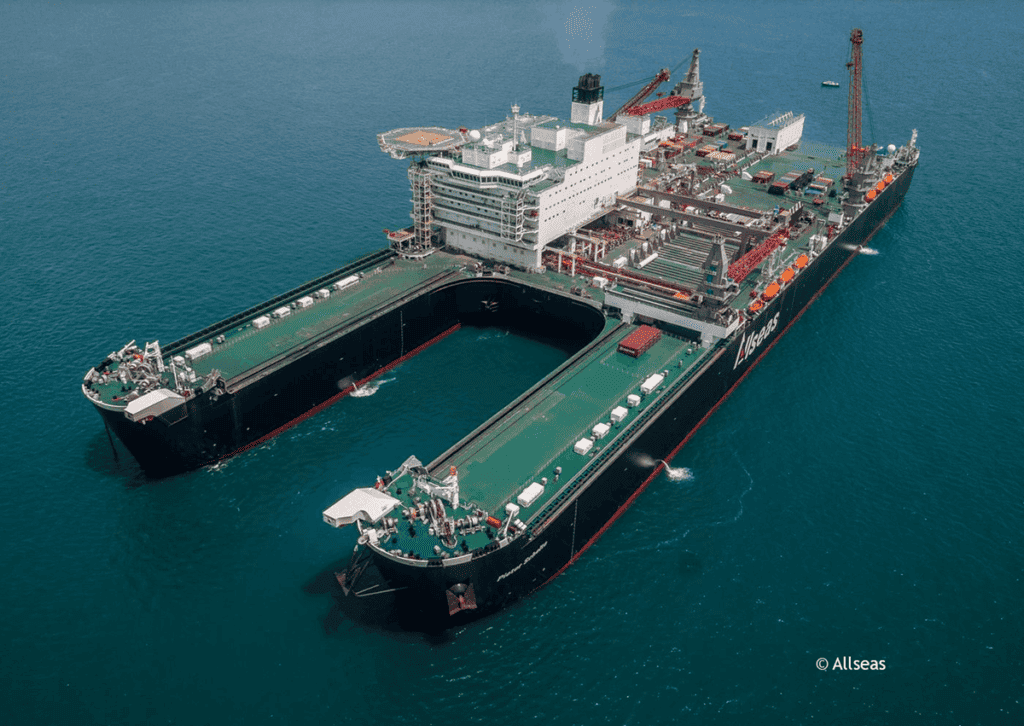
Other notable train ferries still in operation include the Lake Victoria train ferries, capable of transporting 22 carriages, but now used only for freight and the New Zealand Interislander which links the North and South islands.
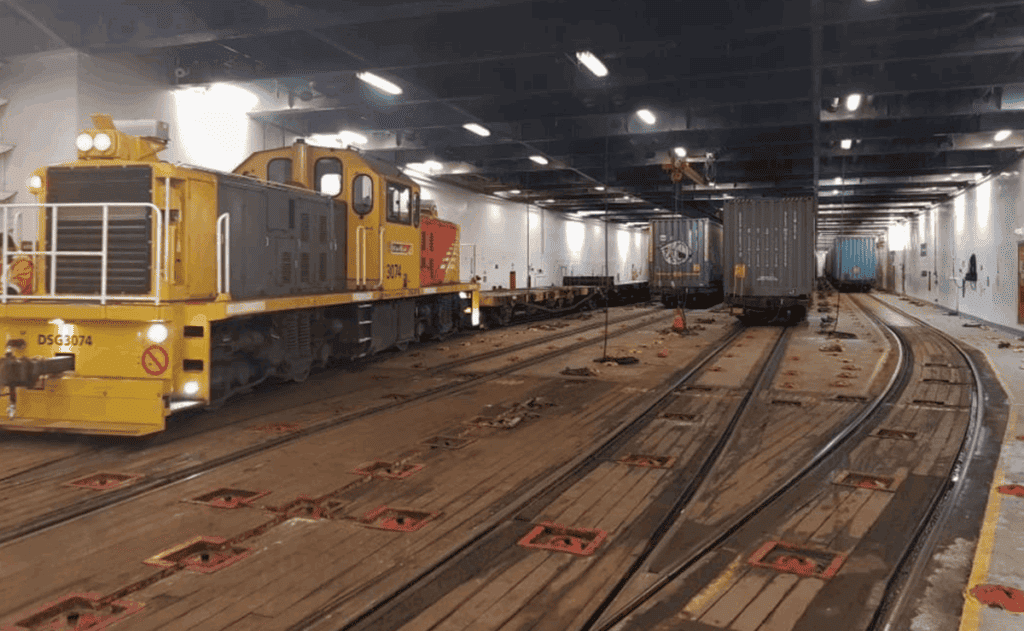
Trains on planes
The ex-Soviet company Antonov An-225 Mriya (hopeful dream in Ukrainian) was the world’s largest cargo plane. It set 124 world records including Highest Art Exhibition in the World (with 500 works of art), longest payload, heaviest payload and it even carried five T-72 battle tanks as well as the Buran space shuttle.
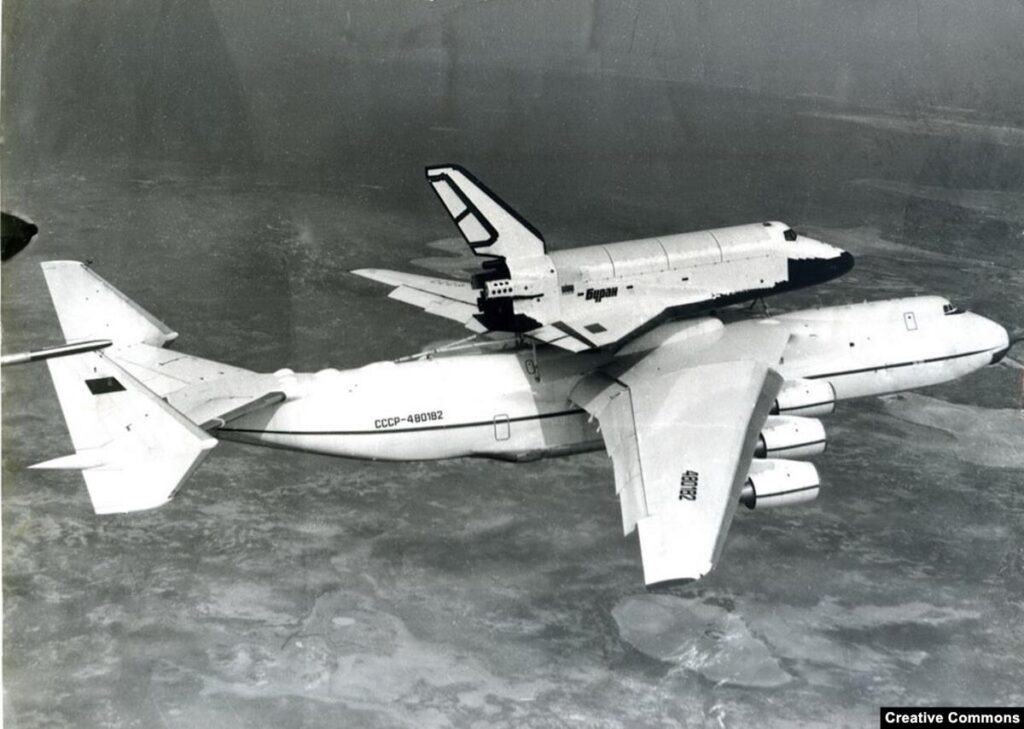
It had 6 engines creating 300,000 lbs of thrust (a Boeing 747 has about 50,000lbs of thrust). It was used to carry diesel locomotives, wind turbines and generators.

Sadly, the Ukrainian world-beating plane will not be breaking any more records as, in 2022, it was destroyed in the war between Russia and Ukraine.
However it’s baby brother, the An-124, lives on. The An-124 has also been used to transport trains. In 1994 the An-124 set the record for heaviest cargo when it transported a 109-tonne General Motors locomotive, with equipment, adding up to 146 tonnes. It also inadvertently set the record for fastest train at 530mph! (But in 2001 its big brother the 225 beat the record, transporting an incredible 254 tonne generator.)

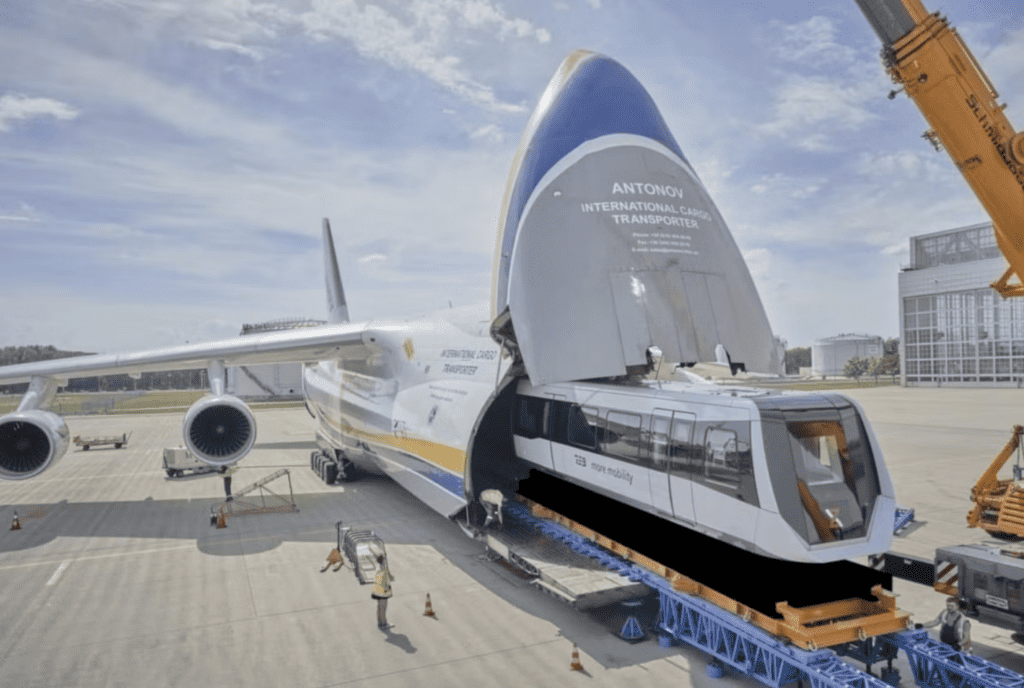
The An-124 has been used to carry trains such as the friction-free maglev train, built by German company Max Boegl. The train was flown 7,500 km from Munich to Chengdu.
More info about train-ferries:
New ferry with batteries and solar panels for trains to Sicily – Railtech
Europe’s Only Train-on-a-Ferry route – Mainland Italy 🇮🇹 to Sicily 🇮🇹 overnight – Rail-Away
Skåne Multipurpose Ro-Ro/Train Ferry – Ship Technology
Last train to Sicily – The Guardian
Rail ferry is history for the night train Stockholm – Berlin – Railtech
RFI’s IGINIA is the first dual fuel electric ferry active in Italy – Ferry Shipping News
More info about the largest aeroplane in the world
THE PLANE THAT EATS TRAINS – The Network Effect
Simple Flying -Did You Know: The World’s Biggest Plane Set 123 Other Records
Ukraine’s Mega-Plane Works Overtime Through Pandemic – RadioFreeEurope
https://www.antonov.com/en/airlines






